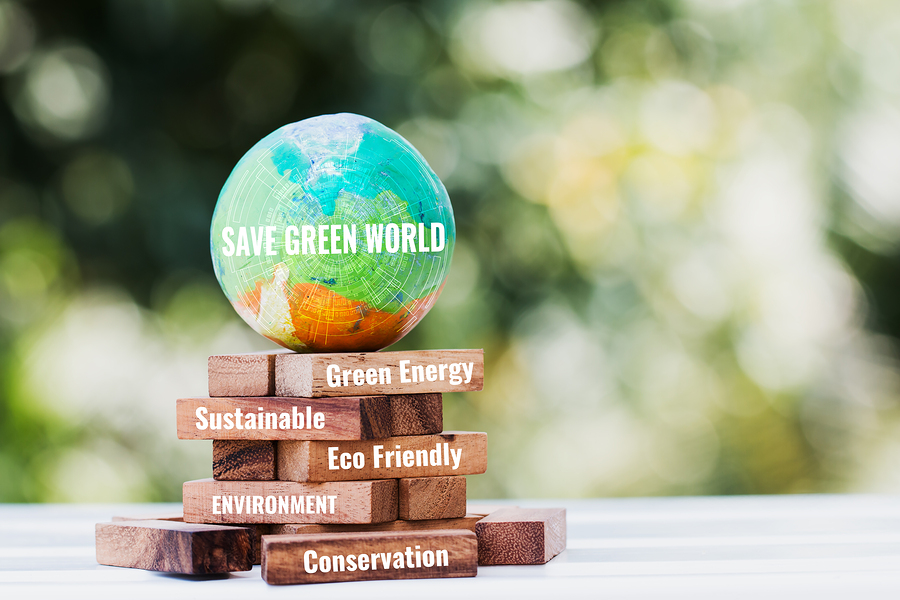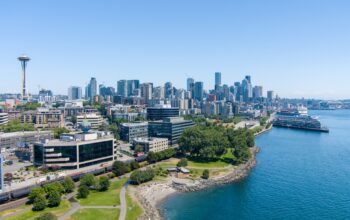Disclosure: As an Amazon Associate I earn from qualifying purchases. This page may contain affiliate links, which means I may receive a commission if you click a link and purchase something that I have recommended. There is no additional cost to you whatsoever.
Environmentally Sustainable Work Practices
Sustainable work practices mean that economic development must be ecologically viable now and into the future. While the natural environment provides us with resources, it is also a dumping ground for waste and resources that we no longer require.
Our use and misuse of the world’s resources has a negative impact on the health of the natural environment and our own quality of life.
Resources in the workplace
Resources are all the things you need to do your job on a regular basis. They are the little things that you often take for granted and do not give any thought to.
Resources generally used in the workplace can include such things as:
- paper products
- pens and pencils
- paper clips and staples
- plastic products
- toner and ink cartridges
- chemicals for cleaning
- business equipment
- office furniture
They are also the things that can make an enormous difference to not only the organisation’s cost efficiency but also its carbon footprint.
What is a Carbon Footprint?

A carbon footprint is the direct effect our actions and lifestyle have on the environment in terms of carbon dioxide emissions.
The biggest contributors to carbon footprint are travel needs, and electricity demands. However, in some way, all our actions have a direct or indirect impact. This includes (but not limited to):
- the food we eat
- the clothes we wear
- the way we entertain ourselves
- the way in which we move from place to place (cars, buses, aeroplanes)
All of these things need to be manufactured or produced in some way. Machinery requires energy, cars, buses and aeroplanes burn fuel, and in our homes and offices we use a significant portion of electricity that generally come from fossil fuel burning power plants.
All these actions contribute to accelerating global warming and climate change – leaving behind a ‘carbon footprint’.
Many businesses are now looking closely at their work practices and the resources they use in terms of reducing their carbon footprint.
There are a number of government initiatives at a national and global level directed at making improvements in the way we work – helping us:
- think about the way we use energy
- the products and services we use – and in turn produce
- the way we produce them
and, in general, assist in setting up what are known as ‘green’ offices. Some of these initiatives are, and can be found at:
- Department of Climate Change – The Department of Climate Change was established in 2007 as part of the Prime Minister and Cabinet Portfolio. The Government has set targets to reverse current trends and drive down Australia’s carbon pollution emissions from 2010 onward. Its goal is to reduce emissions to 25 per cent below 2000 levels by 2020.
- Department of the Environment, Water, Heritage and the Arts – The Environment Protection and Biodiversity Conservation Act 1999 (the EPBC Act) is the Australian Government’s central piece of environmental legislation. It provides a legal framework to protect and manage nationally and internationally important flora, fauna, ecological communities and heritage places – defined in the Act as matters of national environmental significance.
- Department of Resources, Energy and Tourism – The Department of Resources, Energy and Tourism provides advice and policy support to the Australian Government regarding Australia’s resources, energy and tourism sectors. The Department develops and delivers policies to increase Australia’s international competitiveness, consistent with the principles of environmental responsibility and sustainable development.
- International Standards Organisation – The International Organisation of Standardisation, (ISO) is a worldwide organization that develops many different kinds of Standards. ISO 14000 is a series of documents that relate to the implementation of an Environmental Management System (EMS). Within this series, ISO 14001 is the document which defines the requirements for the EMS and provides guidance for its use. An EMS gives an organisation a systematic approach for managing their environmental impact – the consequences of their operations.
Did you know?
- A 20% saving in energy can be achieved through simple practical measures
- Reducing office temperature by 1°C can reduce heating bills by 10%
- A photocopier left on overnight wastes enough energy to make 5,300 A4 copies
- Heating a room with a window left open can cost up to £85.00 / year
- 100m2 of office space produces 14 tonnes of carbon dioxide per year
- One energy saving light bulb could save up to £78 over the lifetime of the bulb
- Businesses can save 4-5% of their turnover through waste minimization at little to no cost!
- 33% of materials purchased end up as waste
- 70% of office waste is recyclable
- Six million toner cartridges are used in UK offices every year – half are sent to landfill
- Just one drop a second from a dripping tap wastes nearly 5,000 litres of water a year.
An environmentally sustainable workplace
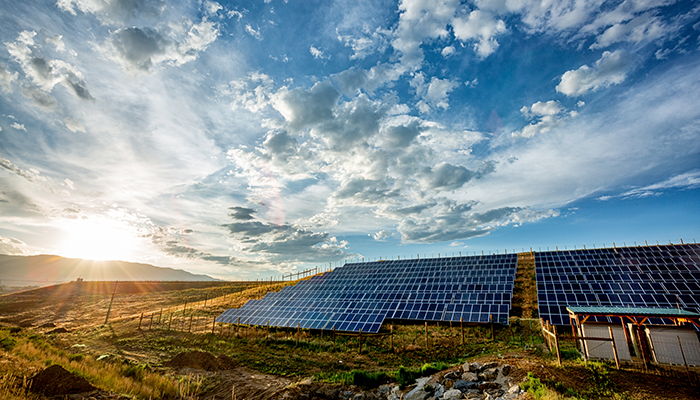
When looking at developing an environmentally sustainable work place it is necessary to look at the work practices and resources we use and determine if:
- they are being used as effectively as possible. For example are you using them in accordance with the manufacturer or organisational instructions? Incorrect use of resources can cause damage or injury and waste resources
- you are using the best resource for each particular job; are there ‘green’ products that could do the job? Are there alternative methods of completing the task?
- you are not wasting the resource needlessly; are you re-using and recycling resources wherever possible?
- your purchasing procedures for resources reflect an environmentally sustainable strategy.
- they present hazards to people or the environment. Working with chemicals or toxic substances, bad lighting or bad ventilation are all areas of concern and if they exist in a given workplace should be reviewed with alternative products and means in mind.
Your area of responsibility
The best place and the easiest way to start the process of ‘greening’ your workplace is to look at your own area of responsibility and the specific things that you can, personally, control.
This means looking at the way you work and doing your job as conscientiously as possible – to be aware of what you are doing at all times.
Look at how your work habits might affect the environment and ways in which you could use workplace resources more efficiently. For example:
- turn off all computers, monitors and other office machines when not in use (especially overnight and on weekends).
- activate the energy-saving function that is installed on most new computers.
- if your computer doesn’t have energy-saving software installed you can save energy by simply switching off the monitor when not in use. Monitors can consume three times the energy used by your PC.
- re-set photocopiers and printers to default to double-sided printing.
- always choose the low water consumption feature on dishwashers (ie. the short-wash option often called “Economy”). Put up a sign to this effect for all users, including cleaners.
- remove light bulbs from areas where they are not needed or there are more than necessary. Some offices have many more ceiling lights than necessary. Removing some of the bulbs can save money and electricity.
- turn off lights when not in use (especially overnight and on weekends) and put up signs to remind other people to do so.
- open windows – if you can – instead of using air conditioners. Remember that most air conditioning systems provide less than 10% fresh air.
- program your climate control systems to turn off at the end of each day and on weekends – there’s no point heating and cooling empty offices.
- install a desk-side recycling bin for all paper products – you can either re-use a cardboard box or ask your waste paper collection contractor to provide one. Most waste collection companies can provide these for you.
- use e-mail wherever possible. You can also send and receive faxes electronically Use on-line (versus hard copy) versions of documents such as annual reports, information memorandums etc. Cut and paste necessary information and/or print needed pages only (rather than whole reports). Avoid using cover sheets when sending facsimiles and ‘With Compliments’ slips when sending physical mail.
- re-use envelopes, bags etc. Make a space in your stationery store area for people to recycle them.
- re-use paper that is unprinted on one side for in-house drafts, fax machines, photocopies.
- re-fill toner cartridges used in photocopiers and ink-jet printers.
- establish a ‘Green Office’ team or committee to implement longer-term and ongoing energy efficiency initiatives.
- walk, cycle or use public transport if possible.
A successful, environmentally sustainable workplace, however, is bigger than just your own workspace. It requires the resources, support and commitment of the entire organisation to fully succeed.
Organisational and legislative requirements
As with all other aspects of business operations, the environmental sustainability of an organisation will involve policies and procedures both at an internal organisational level and at a legislative level – issues that are required by the government or environmental bodies.
These policies and procedures may include (but are not limited to):
- meeting relevant laws, by-laws and regulations or best practice. Best practices can be defined as the most efficient and effective way of accomplishing a task, based on repeatable procedures
- that have proven themselves over time for large numbers of people.
- work plans and strategies designed to minimise waste or to increase efficient use of resources.
- addressing environmental and resource sustainability initiatives such as environmental management systems, action plans, green office programs, surveys and audits.
- determining the most appropriate waste treatment methods.
- appointing a staff member, or committee, to oversee the design, implementation and monitoring of a ‘green office’ strategy for the organisation.
- prevention and minimisation of environmental risks and hazards.
Identifying resource use

The first step in developing a green office is to take a close look at current resource usage. Ask;
- what are you using?
- how are the resources being used?
- how many are being used?
- how efficient and/or effective are the current resources?
- are there any issues with the current resources?
- what impact do these (if any) issues have on the organisation?
- can current resources be replaced by either more eco friendly products to do the same job, or amending processes and procedures to (possibly) cut out the need for using a product to fulfil the task altogether. For example when cleaning the office kitchen area instead of using degreasing chemicals to clean the sink and kitchen surfaces you could make up a solution of water and lemon or vinegar to do the same job.
There are a number of ways in which an organisation can track and monitor the way in which it uses resources. For example a simple spreadsheet could be used to record and measure resource usage.
An organisation will find this type of information is extremely useful when the time comes to look at its work practices, the way it currently uses resources and to look for more eco friendly methods of working.
Environmental Management Systems
An Environmental Management System is an approach which allows an organisation to identify, monitor and control its environmental aspects. An effective Environmental Management System (EMS) can reduce an organisation’s:
- costs on materials
- waste and energy
- ensure compliance with legislation
- help to maximise market and investment opportunities
- and boost staff morale.
Key questions in establishing an Environmental Management System include:
- Which resources are being used (what are the inputs in terms of energy, water and materials)?
- Where do the resources come from?
- Where do the resources end up after use?
- How much is used and how much does it cost?
- How much is wasted (how much does not end up in the final ‘product’)?
- What is the environmental impact?
- Why is so much used / wasted?
- What can you do to reduce the quantities used, waste produced and environmental impact?
- How will you do it (Action Plan)?
- Has it made an impact?
The Environmental Audit
In looking at current processes, procedures and resource usage with a ‘green office’ in mind, you are in effect conducting an environmental audit of the organisation.
The purpose of this is to look at the organisation’s present work practices and assess areas that can be improved – determining where the organisation is now, where they would like to be (in terms of environmental sustainability) and how to close the gap between the two issues.
An “audit” can be as basic as members of the committee walking through the office, observing and reporting on how work is currently carried out. For example;
- checking to see if equipment is left switched on when it is not being used for long periods of time or after staff have gone home.
- checking what types of waste is being put into rubbish bins, and how often paper is used on only one side.
- finding out about current purchasing policies.
- talking to other staff about their ideas to greening the office, such as saving energy or reducing waste.
An environmental audit can also be a complex task involving in depth reviews of each area of the workplace;
- looking at each task and determining if it is being undertaken in the most effective, energy efficient way
- determining how the organisations activities affect the environment
- assessing the significance of the impacts and looking at options to make low cost and no cost improvements.
Environmental hazards
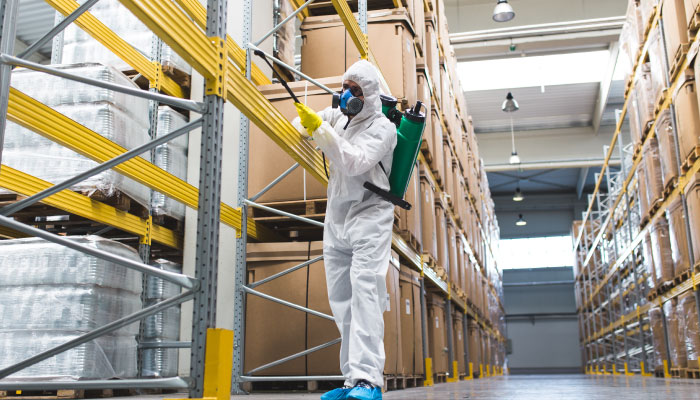
An extremely important part of an audit would be identifying any environmental hazards. As well as the normal workplace hazards there are several hazards of an environmental nature. These include:
- hazardous substance usage and storage
- inadequate heating/cooling
- dust created by grinding and cutting equipment
- drainage
- waste disposal
- air emissions – toxic fumes, pollution
- cleaning activities that use industrial or toxic cleaning agents.
Waste is defined as hazardous if it has properties that make it harmful to human health or the environment. For example, it could have irritant properties, or be explosive, flammable, corrosive, oxidising or carcinogenic. Many types of waste are classified as hazardous waste:
- lead-acid batteries
- electrical equipment containing hazardous components such as the cathode ray tubes in television sets
- solvent-based inks and paints
- waste oils
- pesticides
- acids
- some prescription medicines.
Some types of waste only become classified as hazardous when they contain dangerous substances above certain thresholds, such as a specified concentration. If your organisation produces hazardous waste you must do the following:
- provide storage in appropriate secure, accessible containers.
- inspect containers at least once a week.
- train staff in procedures to handle hazardous waste.
- keep an inventory of stored hazardous waste.
- ensure handling and transportation is only carried out by registered or exempt waste carriers.
- use consignment notes when your hazardous waste is transported and keep a copy on file as evidence that you have disposed of the waste in a proper manner.
- ensure recovery or disposal of waste is only carried out by firms authorised to do so.
- It is everyone’s duty to ensure that waste and other pollutants do not cause unnecessary damage to the planet on which we live. Use non-toxic and biodegradable products wherever possible.
- It makes practical sense to exclude sources of pollutants from the workplace, instead of having to adopt expensive remedies to deal with them once they have been introduced
Opportunities for improvement
By conducting an environmental audit, the organisation is looking for opportunities to improve its methods of operation so that they fall within the guidelines of an environmentally sustainable office.
In addition to the audit, there are a number of ways in which an organisation can initiate changes and improvements in their workplace to embrace environmental sustainability. Some of these are:
- staff suggestions
- working with colleagues and stakeholders
- using appropriate sources of information
- purchasing strategies
- setting targets
Staff suggestions
A smart organisation will encourage suggestions from its staff. They are the ones who know their own work areas best and may have the best ideas on how to improve energy efficiency and increase use of renewable, recyclable and reusable resources in their areas.
They may also suggest how to prevent and minimise risks, reduce emissions of greenhouse gases and they should also be encouraged to report breaches (or potential breaches) of policies or procedures. This last point is important.
If a staff member sees or is aware of any issues that could put other staff, premises or equipment in danger they need to advise their supervisor or manager.
Equally, if they are aware of unnecessary waste or can see areas where improvements to energy efficiency can be made they should be encouraged to say so.
Suggestions can include ideas that help to maximise opportunities such as use of solar power or other alternative forms of energy, where appropriate.
As you have learned, the use of electricity is one of the main contributors to carbon footprint. If there are ways of reducing the amount of energy needed by an organisation this will decrease the carbon emission as well as save on costs.
Working with colleagues and stakeholders
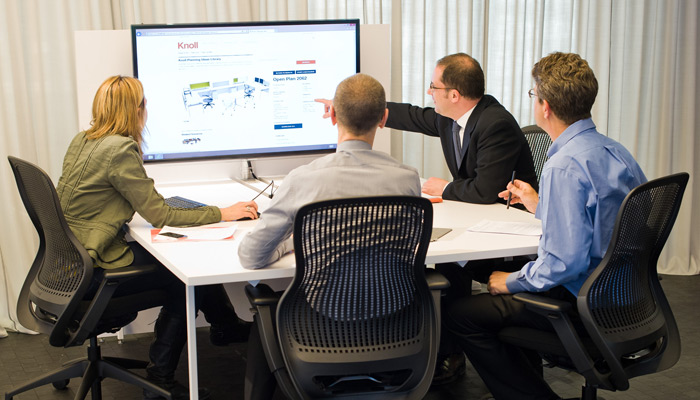
It takes a team effort and commitment to design and develop an environmentally sustainable workplace – one that is (and should be) tailor made for the individual organisation.
This is an important aspect of the design and development process, as every organisation is different and will have different needs, operational and financial issues to consider.
So it is important to communicate with and provide feedback to a range of people both inside and outside of the organisation. People with an interest in the project could include:
- customers – must be happy with the products and services you offer. They should be made aware of the fact that you are now using and/or producing environmentally friendly products.
- employees at all levels of the organisation
- government departments will offer support and advice on environmental issues. Depending on the nature of your plans they may even offer grants. For example the installation of water
- tanks and ceiling insulation may be eligible for government funding.
- specialist consultants will have expertise and advice that will help establish a ‘green office’.
- investors or sponsors could be found to fund ‘green office’ initiatives in exchange for partnership arrangements and/or promotional opportunities (if appropriate).
- local community – depending on the nature of the change to be made, the local community; residents and business, may be affected and can be called upon to provide advice or even funding.
- suppliers should be encouraged to carry a range of eco friendly products (if they don’t already).
Sources of information
The more an organisation knows about a specific subject, the better the decisions it makes will be. So it is with information about environmental sustainability.
An organisation will need information to determine the best way forward to ensure that their project complies with legislative requirements. Sources of information could include (but are not limited to):
- organisation specifications such as current policy and procedure documentation and how these will be affected by any change
- regulatory sources such as government agencies and industry bodies
- discussions and advice from relevant stakeholders such as staff, customers, consultants and suppliers
- resource usage records – which have been kept over the years and show usage trends and current standards.
- Armed with up to date information, the organisation can look at how it will go about its green office policy. Part of this process could include a purchasing policy with eco friendly products in mind.
Purchasing strategies
More and more organisations are establishing environmental or green purchasing policies and strategies. Such policies and strategies are important for the following reasons:
- green purchasing of products and services raises environmental awareness, which in turn moves more people to buy more environmentally sound products.
- green purchasing has potentially direct environmental benefits. Fewer emissions, less waste and more efficient resources use.
- an increase in demand for greener products and services improves the market position of suppliers.
- demand for green products acts as an incentive for technological development towards greener products.
Purchasing Criteria
When developing a green purchasing policy it is important to first ask a great many questions over a range of areas. For example:
- Is it essential to buy the product – can it be leased or rented?
- Does the product cause ecological damage, such as loss of habitats or damage to threatened species?
- Are there alternatives?
- Can the product be re-used, refilled, recharged or reconditioned to extend its life?
- Can the item be easily upgraded by adding or replacing a part?
- Does the product have a recycled content? If so, what percentage?
- Can the product be recycled easily (in the workplace and/or local community)?
- Is the product or are its components hazardous to humans and/or the wider environment? If yes, what are the health and safety implications and disposal requirements?
- Are there any non-hazardous alternatives available?
- Are technical data sheets available?
- Does the item use energy? (for example; electrical appliances, equipment, machinery, space heating or vehicles).
- If so, is the item as energy efficient as the alternatives?
- Does the item have energy consumption data for all operation modes?
- Can product packaging be reduced or eliminated?
- Is packaging made of recycled material(s)?
- Can packaging be re-used, recycled or returned?
- Is the product locally manufactured and/or locally supplied?
- Does the supplier have a Green Transport Plan for their operations?
Setting environmentally sustainable targets
At a certain point in the process; identifying resource use, conducting an environmental audit, looking for opportunities to improve and conducting general research, the organisation will develop a set of performance targets for achieving environmental sustainability – areas where it will endeavour to reduce its carbon footprint. Performance targets could include areas involving:
- energy consumption (Electricity, Natural Gas, other)
- materials consumption (resources and products it uses)
- waste generation (how it recycles, reuses and renews)
- environmental condition – the ecological significance of the way it uses its land and / or premises
- transportation impacts – materials and people (how it moves its products and people around)
- water consumption
Performance targets are just that; they must be performed. This means that all relevant stakeholders need to know what these targets are.
It should be noted that performance targets should be SMART – Specific, Measurable, Achievable, Realistic and Time framed. This is because the targets need to be monitored for success and if they are not ‘SMART’ it would be very difficult to measure success in a clear and concise way.
Making it happen
Communicating the changes to relevant stakeholders and implementing them can take place in a number of ways. People need to be told what, about their work role, is going to change, when and how this will happen and what the expected performance standards are going to be.
Communicating the changes
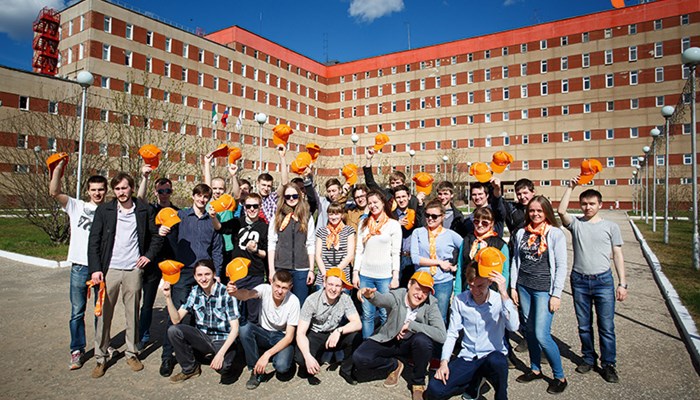
Methods of communicating with stakeholders can include:
- staff training sessions – sometimes a change also means entirely changing the way a task is completed; it may require different equipment or processes. Staff training sessions are an excellent way to help staff learn any new skills necessary to perform their new tasks.
- professional development (PD) – this is a great way to keep staff up to date on new trends and technology that can assist and underpin their efforts in maintaining an eco friendly environment
- staff meetings – sometimes changes to be made may only be of a minor nature. In these cases holding a staff meeting where the new procedures are explained may be all that is required. Staff can ask questions, raise any issues, make further suggestions for improvement and, possibly, get an instant response to their issue or suggestion.
- internal memos – provide a written record that notification of the changes was made. A memo can also provide written instructions on how, where and when the change is to take place as well as details on the performance standard.
- new company policy documents – such as staff handbooks and procedures manuals can provide a ‘permanent’ record of the new policies
However the changes are communicated the organisation, or the green team, should make sure that all relevant staff are fully aware of their new responsibilities and ask if there are any areas of concern. It is important to the success of the project that all stakeholders are fully involved in and committed to it.
Implementing the changes
Implementing the changes should involve drafting an action plan that will spell out the actions to be taken in areas such as paper buying, recycling, energy, finance, general office supplies and transport.
As mentioned earlier, it is important to ensure the plan is specific, measurable, achievable, realistic and has a time frame.
Depending on the nature of the change and the size of the organisation, all changes to be made could be implemented immediately or the various changes could be rolled out gradually and in stages to evaluate their effectiveness and so as not to put too much pressure on staff to quickly.
This is where the action plan comes in to its own as it provides a ‘blue print’ for implementation of each stage of the changes to come.
Starting small is always best – you can always revise and update the plan when early objectives have been met. The plan should state:
- what the current practice is
- its impact on the environment
- what action is to be taken
- by whom and
- by when
Monitoring performance
Adopting an action plan is not the end of the process. The ‘green team’ should talk to colleagues on a regular basis and should be prepared to listen to their comments. You need to know how these new policies are affecting work habits and productivity. They may have:
- more ideas now they are starting to think “green”
- concerns about the new processes
- comments on what is or is not working
- ways of further improving the systems
Monitoring progress can also mean determining the success of the program. For example how much has been saved in terms of energy consumption due to a decrease in electricity requirements and so on. This is an ideal opportunity to continue to communicate the progress of Greening the office.
Let staff know what results have been achieved. Produce charts and notices to display on staff comment boards or at the reception so customers can see your efforts in protecting the environment. For example information communicated could include (but is not limited to):
- how much the demand for electricity has dropped
- the resulting financial savings over the year
- how much less CO2 has been produced.
- how much paper, aluminium has been recycled or water saved
Depending on the results achieved in the initial stages of the plans implementation and feedback received from stakeholders, improvements could (and should) be made on a continual basis. Products and processes change rapidly and continually.
So, too, should the organisation’s standards. In addition to this an environmentally sustainable strategy should take a longer term view of improvements it could make – more than simply changing the paper it uses and the way it uses.
The purchase of ‘capital equipment’ such as machinery, computers, printers, furniture, company cars and so on are a major consideration and expense in any organisation. This type of resource cannot simply be thrown out and replaced because the organisation is now ‘green’.
Future plans, however, could include replacing current business equipment and machinery with more energy efficient models when these are worn out, or are due for replacement within the regular update schedule of the organisation.
This could take several years to accomplish and would need to be reviewed on a regular basis as, again, technology changes rapidly and what is new and eco friendly today… can be replaced by something better and even more environmentally friendly tomorrow.
